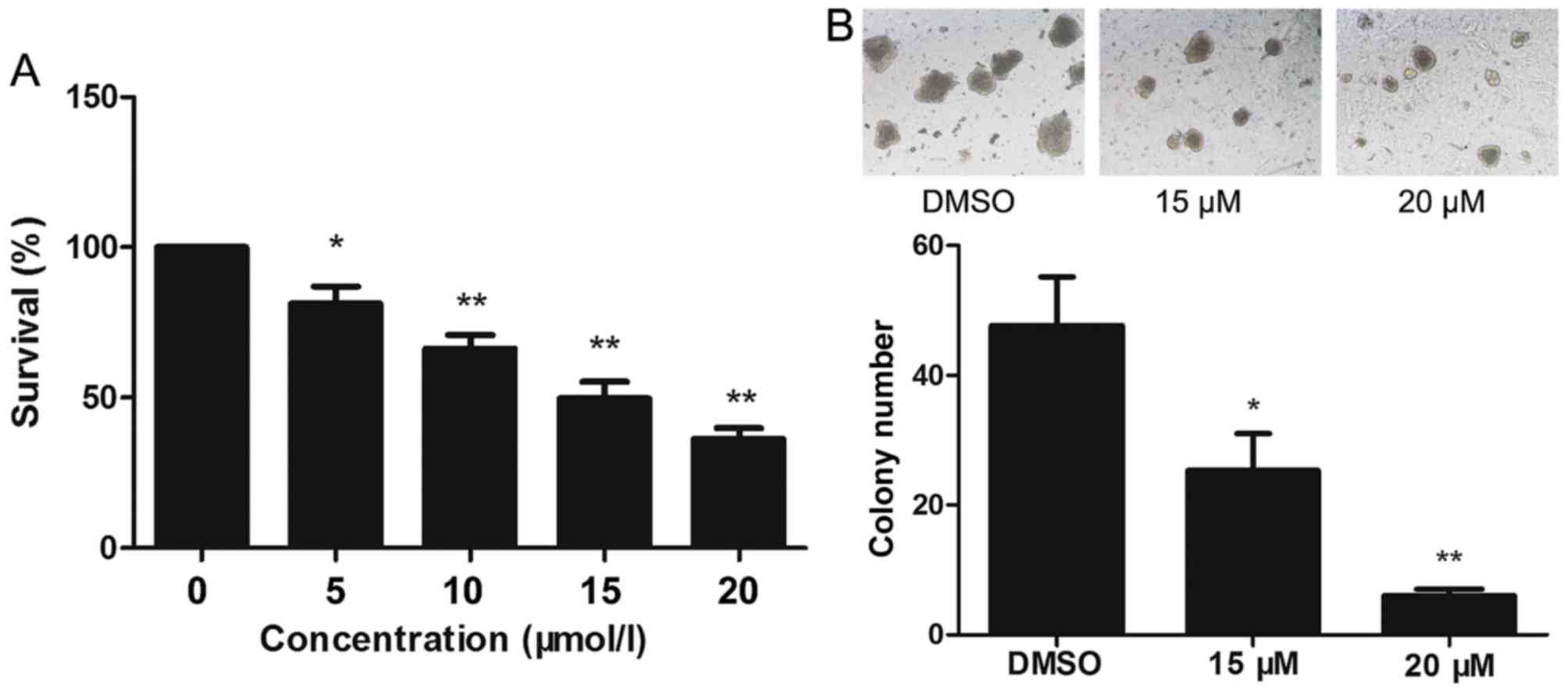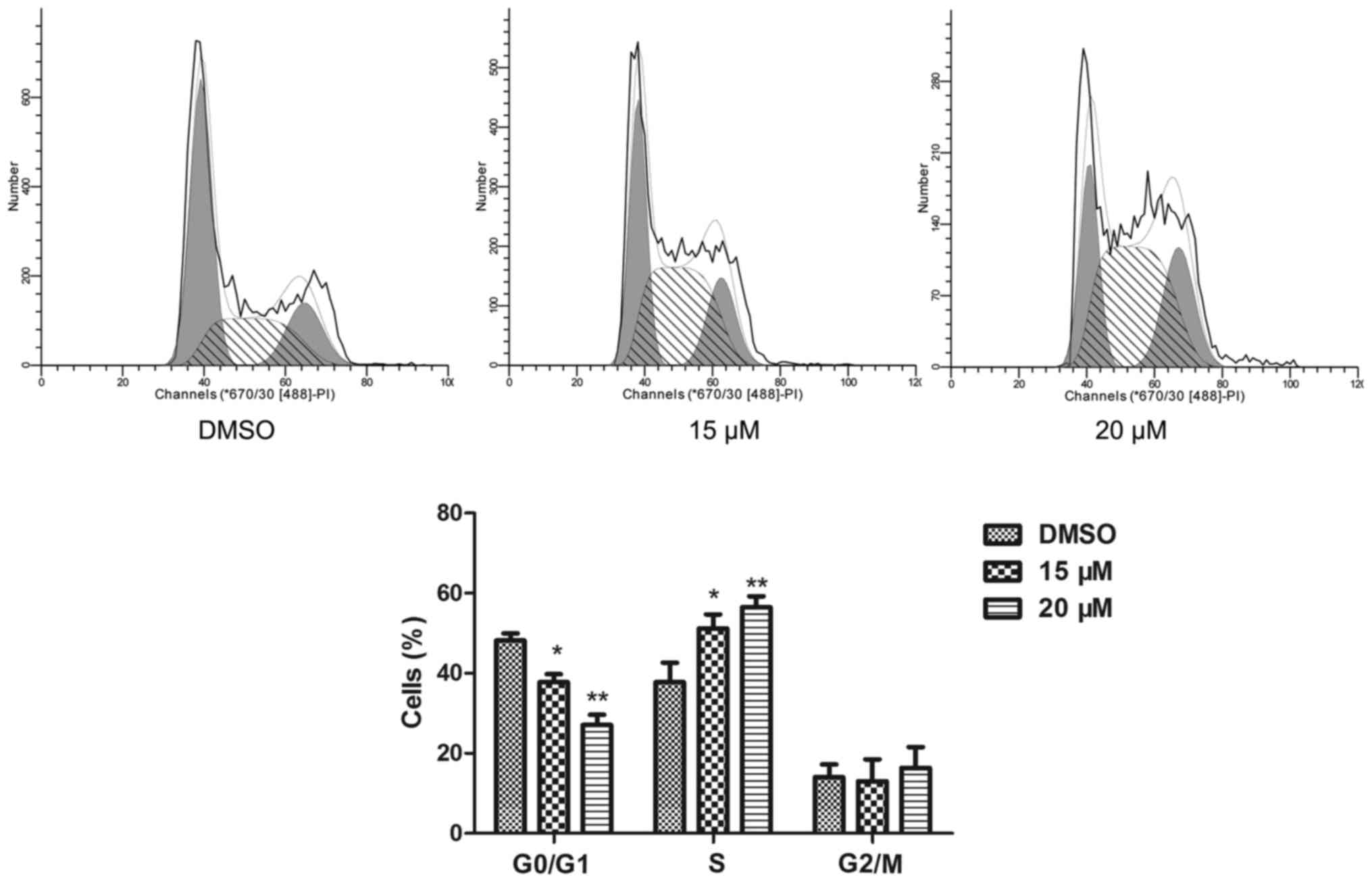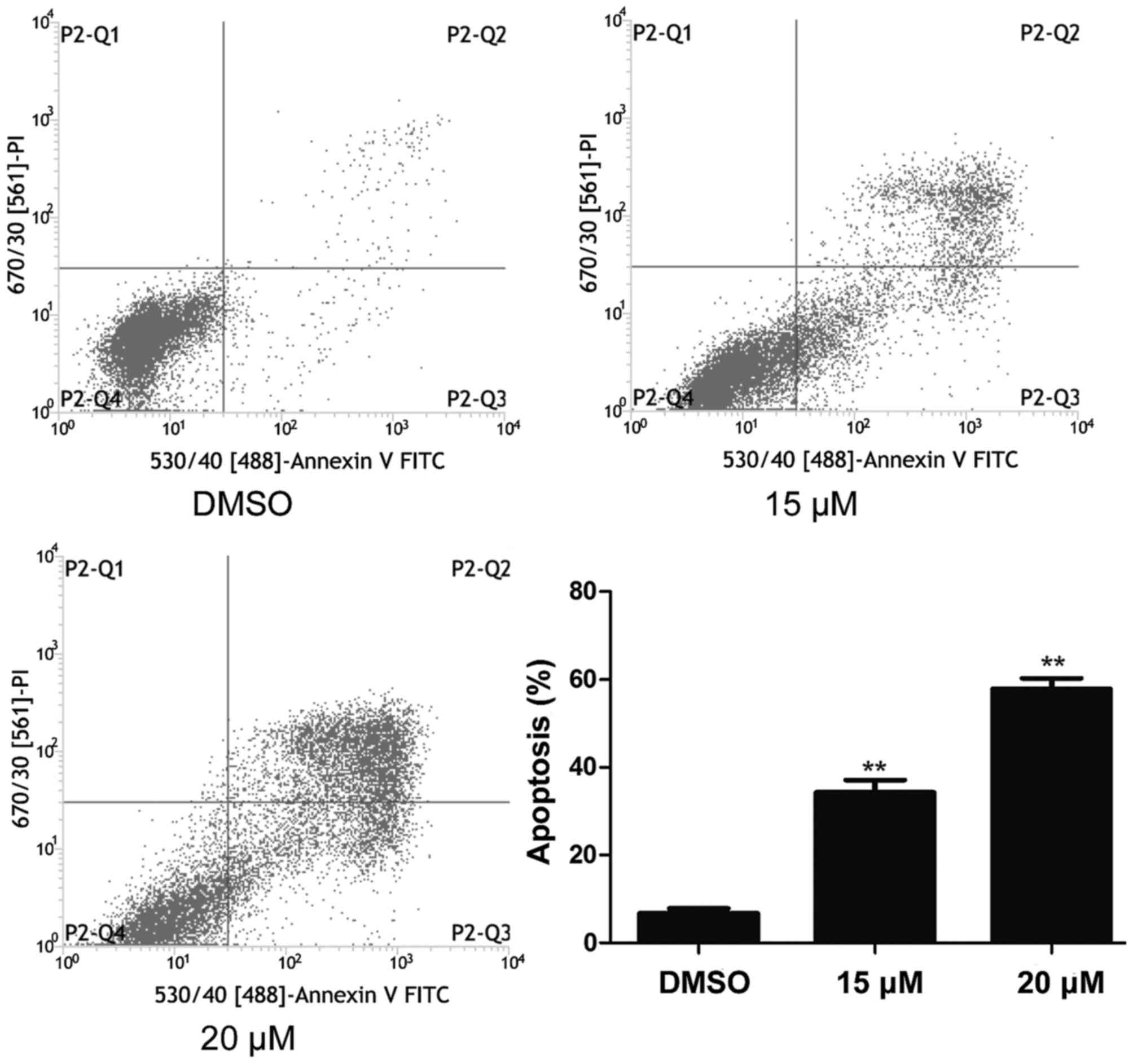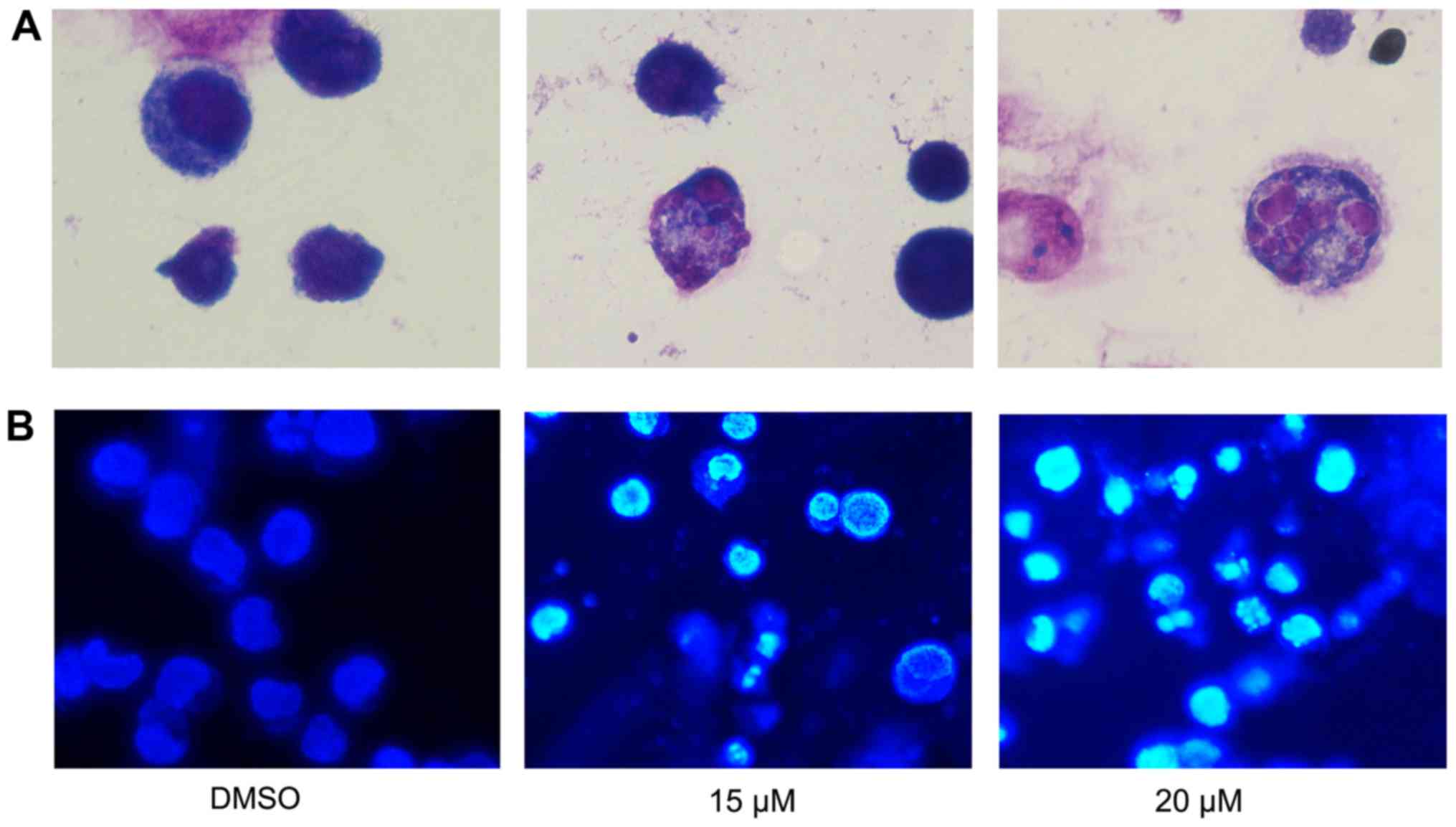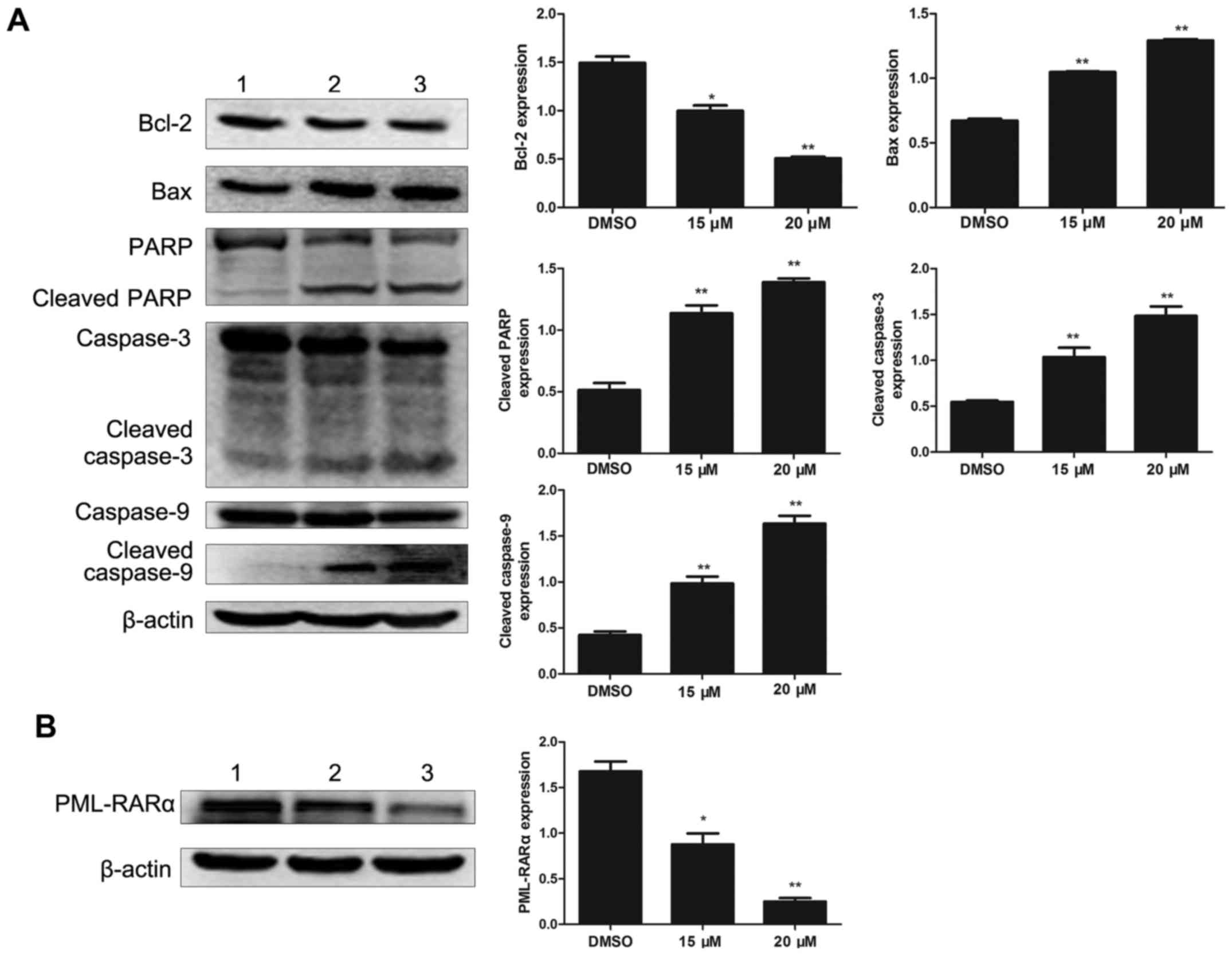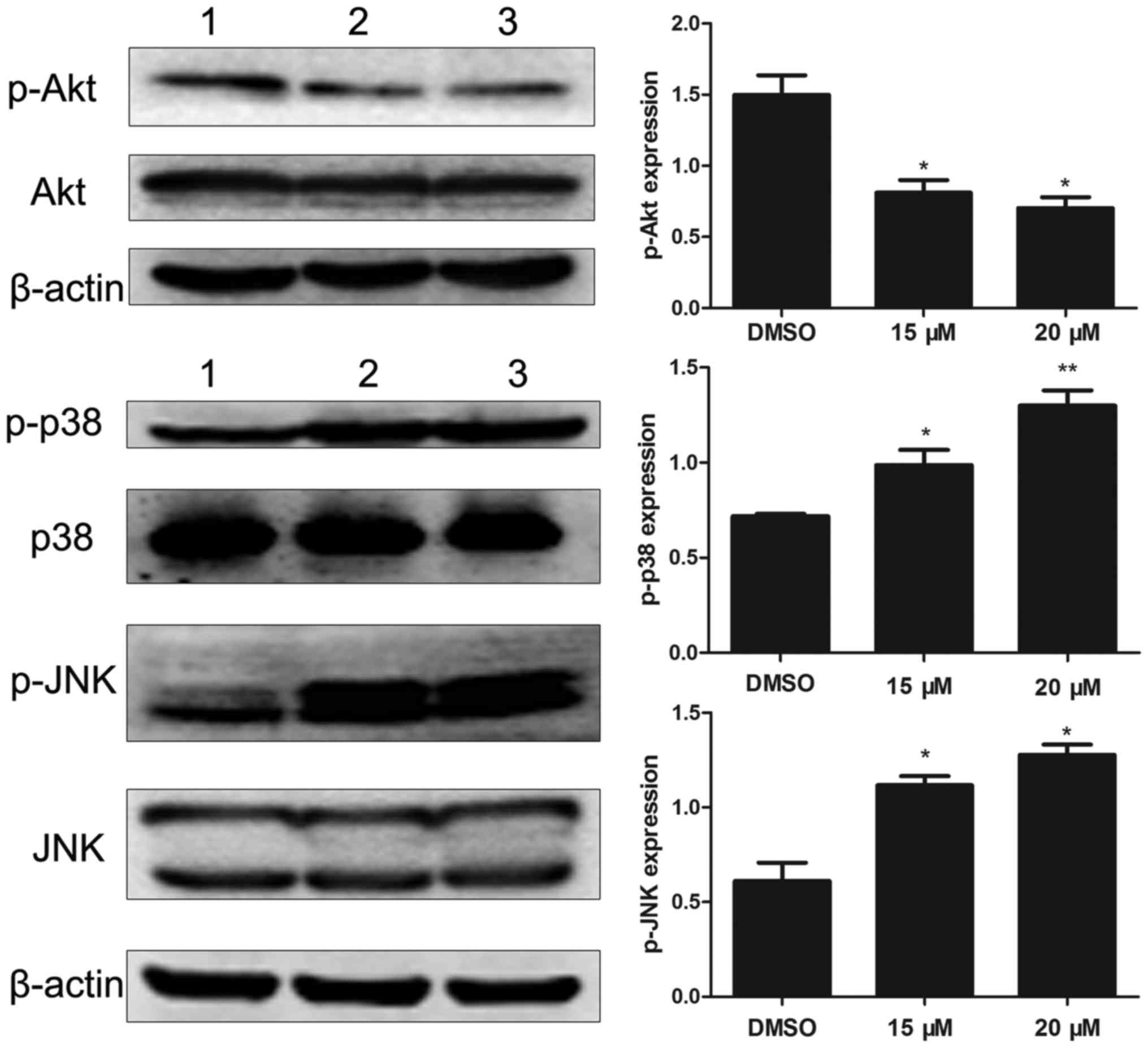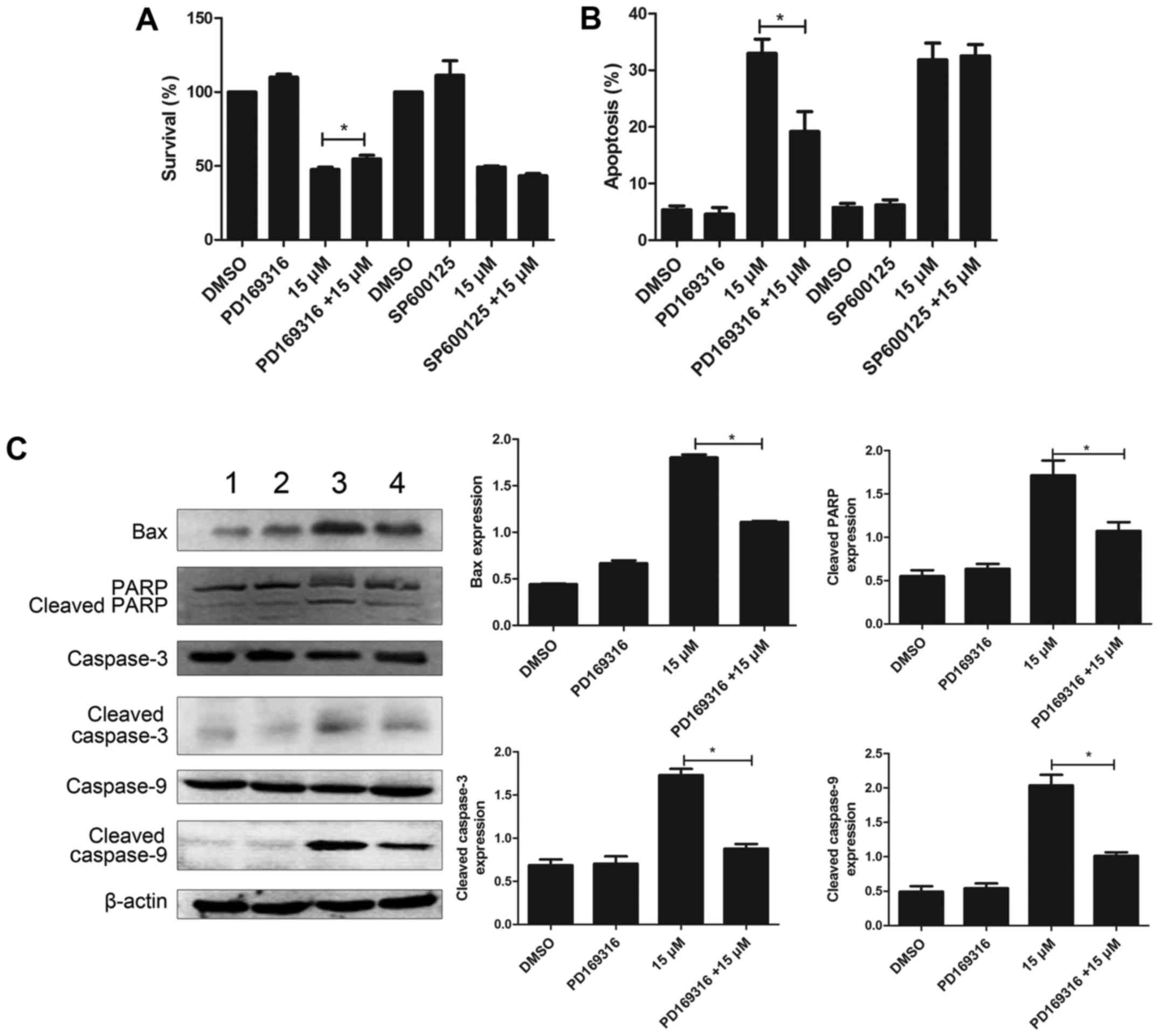|
1
|
Ma H and Yang J: Insights into the
all-trans-retinoic acid and arsenic trioxide combination treatment
for acute promyelocytic leukemia: A meta-analysis. Acta Haematol.
134:101–108. 2015. View Article : Google Scholar : PubMed/NCBI
|
|
2
|
Brown G and Hughes P: Retinoid
differentiation therapy for common types of acute myeloid leukemia.
Leuk Res Treatment. 2012:9390212012.PubMed/NCBI
|
|
3
|
Kawasaki K, Akaike H, Miyauchi A and Ouchi
K: Sivelestat relieves respiratory distress refractory to
dexamethasone in all-trans retinoic acid syndrome: A report of two
cases. Eur J Haematol. 77:448–452. 2006. View Article : Google Scholar : PubMed/NCBI
|
|
4
|
Ito Y, Tokudome N, Sugihara T, Takahashi S
and Hatake K: Does lapatinib, a small-molecule tyrosine kinase
inhibitor, constitute a breakthrough in the treatment of breast
cancer? Breast cancer. 14:156–162. 2007. View Article : Google Scholar : PubMed/NCBI
|
|
5
|
Kopper L: Lapatinib: A sword with two
edges. Pathol Oncol Res. 14:1–8. 2008. View Article : Google Scholar : PubMed/NCBI
|
|
6
|
Konecny GE, Pegram MD, Venkatesan N, Finn
R, Yang G, Rahmeh M, Untch M, Rusnak DW, Spehar G, Mullin RJ, et
al: Activity of the dual kinase inhibitor lapatinib (GW572016)
against HER-2-overexpressing and trastuzumab-treated breast cancer
cells. Cancer Res. 66:1630–1639. 2006. View Article : Google Scholar : PubMed/NCBI
|
|
7
|
Beck TN, Georgopoulos R, Shagisultanova
EI, Sarcu D, Handorf EA, Dubyk C, Lango MN, Ridge JA, Astsaturov I,
Serebriiskii IG, et al: EGFR and RB1 as dual biomarkers in
HPV-negative head and neck cancer. Mol Cancer Ther. 15:2486–2497.
2016. View Article : Google Scholar : PubMed/NCBI
|
|
8
|
Gore J, Imasuen-Williams IE, Conteh AM,
Craven KE, Cheng M and Korc M: Combined targeting of TGF-β, EGFR
and HER2 suppresses lymphangiogenesis and metastasis in a
pancreatic cancer model. Cancer Lett. 379:143–153. 2016. View Article : Google Scholar : PubMed/NCBI
|
|
9
|
Hsiao YC, Yeh MH, Chen YJ, Liu JF, Tang CH
and Huang WC: Lapatinib increases motility of triple-negative
breast cancer cells by decreasing miRNA-7 and inducing
Raf-1/MAPK-dependent interleukin-6. Oncotarget. 6:37965–37978.
2015. View Article : Google Scholar : PubMed/NCBI
|
|
10
|
Jin HO, Hong SE, Kim CS, Park JA, Kim JH,
Kim JY, Kim B, Chang YH, Hong SI, Hong YJ, et al: Combined effects
of EGFR tyrosine kinase inhibitors and vATPase inhibitors in NSCLC
cells. Toxicol Appl Pharmacol. 287:17–25. 2015. View Article : Google Scholar : PubMed/NCBI
|
|
11
|
Liu CY, Hu MH, Hsu CJ, Huang CT, Wang DS,
Tsai WC, Chen YT, Lee CH, Chu PY, Hsu CC, et al: Correction:
Lapatinib inhibits CIP2A/PP2A/p-Akt signaling and induces apoptosis
in triple negative breast cancer cells. Oncotarget.
8:107602017.PubMed/NCBI
|
|
12
|
Liu L, Huang P, Wang Z, Chen N, Tang C,
Lin Z and Peng P: Inhibition of eEF-2 kinase sensitizes human
nasopharyngeal carcinoma cells to lapatinib-induced apoptosis
through the Src and Erk pathways. BMC Cancer. 16:8132016.
View Article : Google Scholar : PubMed/NCBI
|
|
13
|
Oh DY, Kim S, Choi YL, Cho YJ, Oh E, Choi
JJ, Jung K, Song JY, Ahn SE, Kim BG, et al: HER2 as a novel
therapeutic target for cervical cancer. Oncotarget. 6:36219–36230.
2015.PubMed/NCBI
|
|
14
|
Booth L, Cruickshanks N, Ridder T, Chen
CS, Grant S and Dent P: OSU-03012 interacts with lapatinib to kill
brain cancer cells. Cancer Biol Ther. 13:1501–1511. 2012.
View Article : Google Scholar : PubMed/NCBI
|
|
15
|
Lainey E, Thépot S, Bouteloup C, Sébert M,
Adès L, Tailler M, Gardin C, de Botton S, Baruchel A, Fenaux P, et
al: Tyrosine kinase inhibitors for the treatment of acute myeloid
leukemia: delineation of anti-leukemic mechanisms of action.
Biochem Pharmacol. 82:1457–1466. 2011. View Article : Google Scholar : PubMed/NCBI
|
|
16
|
Huang HL, Chen YC, Huang YC, Yang KC, Pan
Hy, Shih SP and Chen YJ: Lapatinib induces autophagy, apoptosis and
megakaryocytic differentiation in chronic myelogenous leukemia K562
cells. PLoS One. 6:e290142011. View Article : Google Scholar : PubMed/NCBI
|
|
17
|
Chen YJ, Fang LW, Su WC, Hsu WY, Yang KC
and Huang HL: Lapatinib induces autophagic cell death and
differentiation in acute myeloblastic leukemia. Onco Targets Ther.
9:4453–4464. 2016. View Article : Google Scholar : PubMed/NCBI
|
|
18
|
Irwin ME, Nelson LD, Santiago-O'Farrill
JM, Knouse PD, Miller CP, Palla SL, Siwak DR, Mills GB, Estrov Z,
Li S, et al: Small molecule ErbB inhibitors decrease proliferative
signaling and promote apoptosis in philadelphia chromosome-positive
acute lymphoblastic leukemia. PLoS One. 8:e706082013. View Article : Google Scholar : PubMed/NCBI
|
|
19
|
Fumagalli I, Dugue D, Bibault JE,
Clémenson C, Vozenin MC, Mondini M and Deutsch E: Cytotoxic effect
of lapatinib is restricted to human papillomavirus-positive head
and neck squamous cell carcinoma cell lines. Onco Targets Ther.
8:335–345. 2015. View Article : Google Scholar : PubMed/NCBI
|
|
20
|
Oshima Y, Tanaka H, Murakami H, Ito Y,
Furuya T, Kondo E, Kodera Y and Nakanishi H: Lapatinib
sensitivities of two novel trastuzumab-resistant HER2
gene-amplified gastric cancer cell lines. Gastric Cancer.
17:450–462. 2014. View Article : Google Scholar : PubMed/NCBI
|
|
21
|
Tang L, Wang Y, Strom A, Gustafsson JA and
Guan X: Lapatinib induces p27(Kip1)-dependent G1 arrest through
both transcriptional and post-translational mechanisms. Cell Cycle.
12:2665–2674. 2013. View
Article : Google Scholar : PubMed/NCBI
|
|
22
|
Elmore S: Apoptosis: A review of
programmed cell death. Toxicol Pathol. 35:495–516. 2007. View Article : Google Scholar : PubMed/NCBI
|
|
23
|
Motomura M, Kwon KM, Suh SJ, Lee YC, Kim
YK, Lee IS, Kim MS, Kwon DY, Suzuki I and Kim CH: Propolis induces
cell cycle arrest and apoptosis in human leukemic U937 cells
through Bcl-2/Bax regulation. Environ Toxicol Pharmacol. 26:61–67.
2008. View Article : Google Scholar : PubMed/NCBI
|
|
24
|
Ola MS, Nawaz M and Ahsan H: Role of Bcl-2
family proteins and caspases in the regulation of apoptosis. Mol
Cell Biochem. 351:41–58. 2011. View Article : Google Scholar : PubMed/NCBI
|
|
25
|
Ouyang L, Shi Z, Zhao S, Wang FT, Zhou TT,
Liu B and Bao JK: Programmed cell death pathways in cancer: A
review of apoptosis, autophagy and programmed necrosis. Cell
Prolif. 45:487–498. 2012. View Article : Google Scholar : PubMed/NCBI
|
|
26
|
McIlwain DR, Berger T and Mak TW: Caspase
functions in cell death and disease. Cold Spring Harb Perspect
Biol. 7:pii: a0267162015. View Article : Google Scholar
|
|
27
|
Su CC, Chen JY, Din ZH, Su JH, Yang ZY,
Chen YJ, Wang RY and Wu YJ: 13-acetoxysarcocrassolide induces
apoptosis on human gastric carcinoma cells through
mitochondria-related apoptotic pathways: p38/JNK activation and
PI3K/AKT suppression. Mar Drugs. 12:5295–5315. 2014. View Article : Google Scholar : PubMed/NCBI
|
|
28
|
Osaki LH and Gama P: MAPKs and signal
transduction in the control of gastrointestinal epithelial cell
proliferation and differentiation. Int J Mol Sci. 14:10143–10161.
2013. View Article : Google Scholar : PubMed/NCBI
|
|
29
|
Gschwantler-Kaulich D, Grunt TW, Muhr D,
Wagner R, Kolbl H and Singer CF: HER specific TKIs exert their
antineoplastic effects on breast cancer cell lines through the
involvement of STAT5 and JNK. PLoS one. 11:e01463112016. View Article : Google Scholar : PubMed/NCBI
|
|
30
|
Castaneda CA, Cortes-Funes H, Gomez HL and
Ciruelos EM: The phosphatidyl inositol 3-kinase/AKT signaling
pathway in breast cancer. Cancer Metastasis Rev. 29:751–759. 2010.
View Article : Google Scholar : PubMed/NCBI
|
|
31
|
Yu T, Cho BJ, Choi EJ, Park JM, Kim DH and
Kim IA: Radiosensitizing effect of lapatinib in human epidermal
growth factor receptor 2-positive breast cancer cells. Oncotarget.
7:79089–79100. 2016.PubMed/NCBI
|



